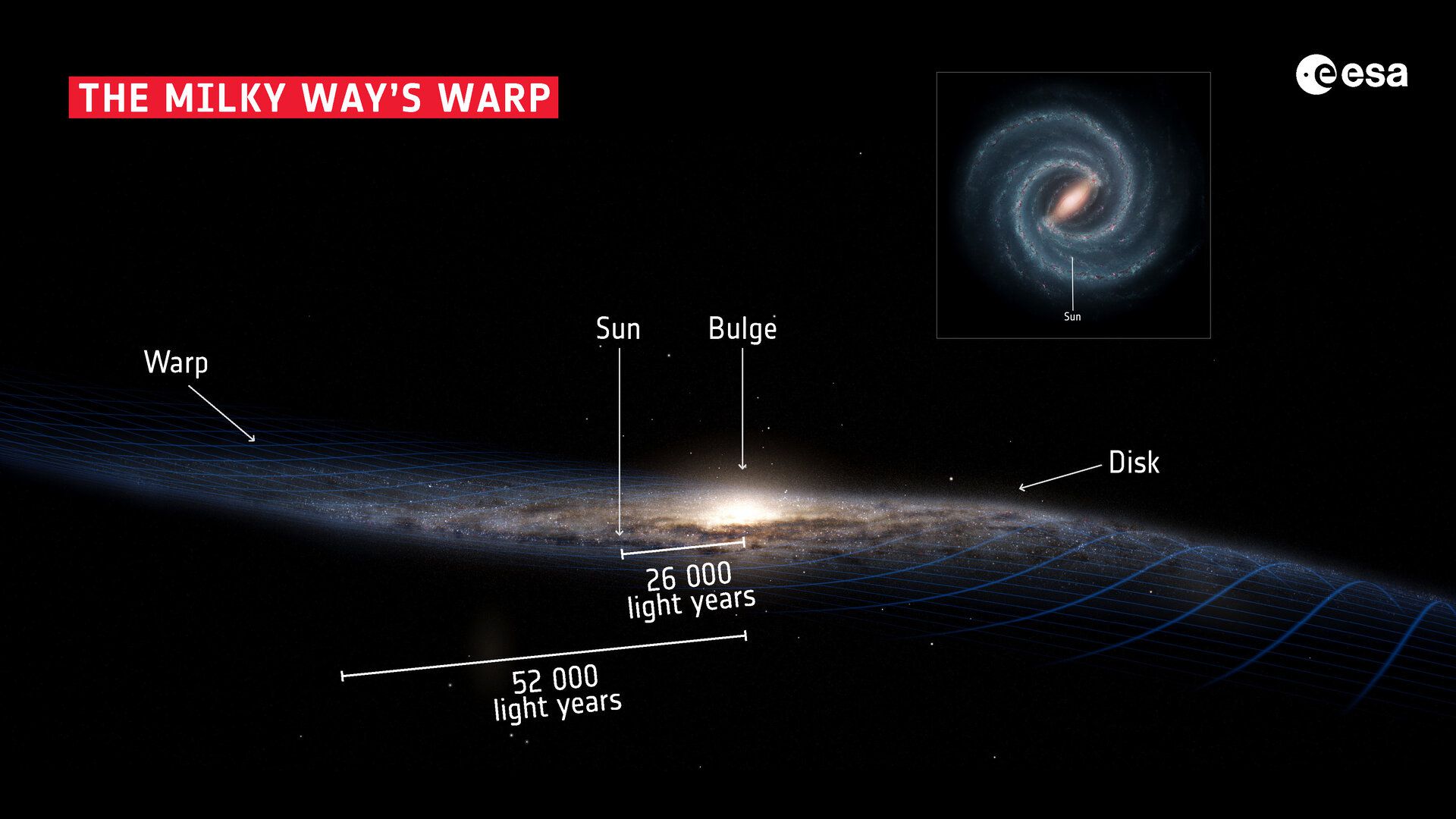Why is the Milky Way distorted? This question has been raised by several scientists over the years and it now appears that a European Space Agency (ESA) satellite can help. According to data collected by Gaia compiled in an investigation, this distortion may have been caused by a collision with another smaller galaxy, which remains and sends waves through the galactic disk "like a rock thrown into water".
As the European Space Agency explains, since 1950 scientists have known that the Via Lctea disk is in the plane, but curved upwards on one side and downwards on the other. The influence of the intergalactic magnetic field or the effects of a halo were some of the reasons presented as possible causes for this structure.

However, the new data collected in the second launch of the Gaia satellite may help to explain this situation in a better way. According to the team, the information he had access to confirms previous theories that the distortion is not static and that it changes its orientation over time. This phenomenon can be compared to oscillation of a pitch as its axis rotates.
But the data also show another type of information, this time in relation to the speed of change of distortion, revealing to be faster than that predicted. For this reason, ESA believes that the distortion must be caused by something more "powerful", such as a collision with another galaxy, which could be the Galactic An Elptica de Sagitrio.
Based on the speed obtained, the distortion would complete a rotation around the center of the Milky Way between 600 and 700 million years old, explains Eloisa Poggio, from the Astrophysical Observatory of Turin and the main author of the study. "This is much faster than we expected, based on forecasts from other models," he notes, yet it is slower than the speed with which the stars themselves orbit the center of the galaxy. The Sun, for example, completes a rotation in about 220 million years.
